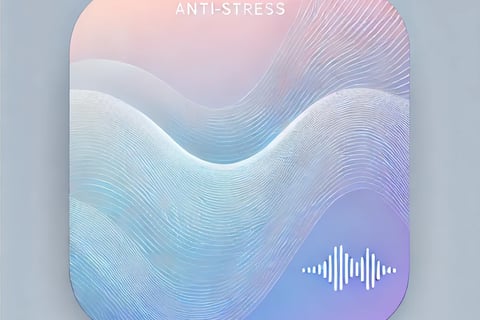7 Plus Relaxation Techniques Students Can Use to Manage Stress?
"Explore effective relaxation techniques students can use to manage stress, including deep breathing, mindfulness, and physical activities. Learn how these practices can enhance mental well-being and improve academic performance."
STUDENT STRESS
10/23/20245 min read
Audio Summary
In today’s fast-paced academic environment, students often find themselves navigating a maze of stressors, from looming deadlines and exam pressures to the challenges of balancing social lives and part-time jobs.
With these mounting pressures, effective stress management is essential not just for academic success but also for maintaining mental and emotional well-being. So, what are some relaxation techniques students can use to manage stress? Understanding and incorporating relaxation techniques into daily routines can significantly enhance a student’s ability to cope with stress and improve overall health. This article explores several proven techniques, including mindfulness practices, physical activities, proper sleep hygiene, and relaxation exercises, helping students create a personalized stress management plan.
For additional insights, students can refer to articles that deal with coping with academic stress, reducing stress by having a good balance between studying and social life, strategies for preventing stress and practical techniques for staying calm when hit with exam anxiety.
Relaxation Techniques Students Can Use to Manage Stress
When considering how to handle stress effectively, the question remains: what are some relaxation techniques students can use to manage stress? Here, we explore a variety of methods tailored specifically for students looking to reduce anxiety and improve their mental health.
1. Deep Breathing Exercises: A Simple and Quick Solution
Deep breathing exercises stand out as one of the most accessible and effective relaxation techniques for managing stress. They are incredibly easy to incorporate into a busy schedule and can be performed anywhere.
By focusing on slow, controlled inhalations and exhalations, students can activate their body’s relaxation response, which helps lower heart rates and cortisol levels—two key factors in stress reduction. Techniques such as diaphragmatic breathing and box breathing are particularly useful.
Diaphragmatic breathing encourages breathing deeply into the diaphragm rather than shallowly into the chest, leading to greater oxygen exchange and relaxation.
Box breathing, which involves inhaling, holding the breath, exhaling, and holding again for equal counts (usually four), can help center the mind and calm the body. Practicing these exercises for just five to ten minutes a day can lead to significant reductions in stress and anxiety levels.
2. Progressive Muscle Relaxation (PMR): Letting Go of Physical Tension
Progressive muscle relaxation (PMR) is a structured method that helps students identify and release tension stored in their muscles, which often accumulates during stressful periods. This technique involves tensing each muscle group in the body for a few seconds and then relaxing them, starting from the feet and moving up to the head.
This practice not only promotes physical relaxation but also raises awareness of how stress manifests physically.
For students, engaging in PMR for just 10-15 minutes a day can lead to a calmer state of mind and improved concentration. It can also be especially beneficial before important events, such as exams or presentations.
3. Guided Imagery and Visualization: A Mental Escape
Guided imagery or visualization is a powerful technique that allows students to mentally escape from stressful situations by immersing themselves in peaceful and calming scenarios. This method often involves listening to a guided meditation that takes students through a serene landscape, helping them relax their minds and bodies.
Research shows that engaging in visualization exercises can reduce anxiety and foster a sense of calm, making them a great tool for students facing high-pressure situations. Whether imagining a serene beach, a quiet forest, or even a favorite vacation spot, this technique can be practiced anywhere and is particularly effective when combined with deep breathing exercises.
Mindfulness Practices for Managing Stress
Mindfulness practices are another essential tool in a student’s stress management arsenal. By cultivating awareness of the present moment, students can develop a greater ability to cope with stressors as they arise.
So, what are some relaxation techniques students can use to manage stress? Let’s explore mindfulness techniques that can enhance overall well-being.
4. Meditation: Calming the Mind and Body
Meditation is a well-known mindfulness technique that encourages individuals to quiet their minds and focus on their breathing or a calming mantra. Various forms of meditation exist, such as mindfulness meditation, loving-kindness meditation, and transcendental meditation, each offering unique benefits.
Research indicates that regular meditation practice can lead to reduced anxiety, improved emotional regulation, and enhanced concentration—all crucial for students managing academic pressures.
Apps and online platforms provide guided meditation sessions that make it easier for students to incorporate meditation into their daily routines, often requiring as little as ten minutes of practice each day to see significant benefits.
5. Body Scan Meditation: Releasing Stress from the Body
Body scan meditation is another effective mindfulness practice. This technique involves systematically focusing attention on different parts of the body, promoting relaxation and awareness. Students start by lying down comfortably and concentrating on their feet, then gradually moving up to the head.
This practice helps them recognize where they hold tension and encourages them to consciously relax those areas. Regularly practicing body scan meditation can not only relieve stress but also enhance emotional awareness, allowing students to better understand their stress triggers and responses.
6. Yoga: A Holistic Approach to Stress Reduction
Yoga combines physical postures, breathing exercises, and mindfulness, making it a comprehensive mind-body practice. By participating in yoga, students can improve their physical flexibility and strength while promoting mental relaxation.
Different styles of yoga, from restorative to vinyasa, cater to various preferences and needs. Studies have shown that yoga can lead to significant reductions in stress, anxiety, and depression, making it a valuable tool for students.
Even short yoga sessions of just 15-30 minutes can have profound effects on overall well-being, and many universities offer classes or resources for students interested in trying yoga.
7. Outdoor Activities: Nature as a Stress Reliever
Spending time outdoors is a highly effective way to manage stress. Nature has a calming effect on the mind, and research suggests that exposure to natural environments can lower cortisol levels and improve mood.
Whether through walking, jogging, hiking, or simply relaxing in a park, outdoor activities provide students with a break from their academic routines. Engaging in physical activity outdoors not only helps reduce stress but also enhances mental clarity and cognitive function, allowing students to return to their studies feeling rejuvenated.
Making time for outdoor activities can be as simple as a daily walk during lunch or a weekend hike with friends.
The Importance of Sleep for Stress Management
Sleep is a fundamental yet often overlooked aspect of effective stress management. Students who fail to get enough quality sleep are more likely to experience increased stress levels, irritability, and decreased focus. Proper sleep hygiene is essential for reducing stress and enhancing overall well-being. For more insights, students can refer to How Can Students Improve Sleep to Reduce Stress and Boost Performance?
8. Power Naps: Short Bursts of Rest for Mental Rejuvenation
Power naps—short naps lasting 15-30 minutes—can be extremely beneficial for students, especially during intense study sessions or after long hours of classes. These quick bursts of rest allow the brain to recover and recharge without the grogginess that can come from longer naps.
Power naps can improve mood, enhance cognitive function, and help students feel more alert and focused, making them an excellent strategy for managing stress.
9. Building a Healthy Sleep Routine
Establishing a regular sleep routine is critical for stress management. Going to bed and waking up at the same time each day helps regulate the body's internal clock, making it easier for students to fall asleep and wake up refreshed.
Creating a calming bedtime routine, such as avoiding screens for at least an hour before sleep, practicing relaxation techniques, or reading a book, can significantly enhance sleep quality. Prioritizing good sleep hygiene is essential for reducing stress and improving academic performance.
Conclusion: Relaxation Techniques for Stress Management
In conclusion, what are some relaxation techniques students can use to manage stress? By integrating techniques such as deep breathing exercises, progressive muscle relaxation, mindfulness practices, physical activities, and maintaining good sleep hygiene, students can develop a personalized approach to managing stress effectively.
The advantages of these strategies go beyond just immediate relief; they contribute to a healthier lifestyle and foster improved mental health over time. Engaging in regular practice of these techniques helps students build healthier coping mechanisms and enhance their resilience, which is essential for thriving academically and personally.
By actively participating in these practices, students can create a robust foundation for navigating the pressures of academic life and achieving their goals.


